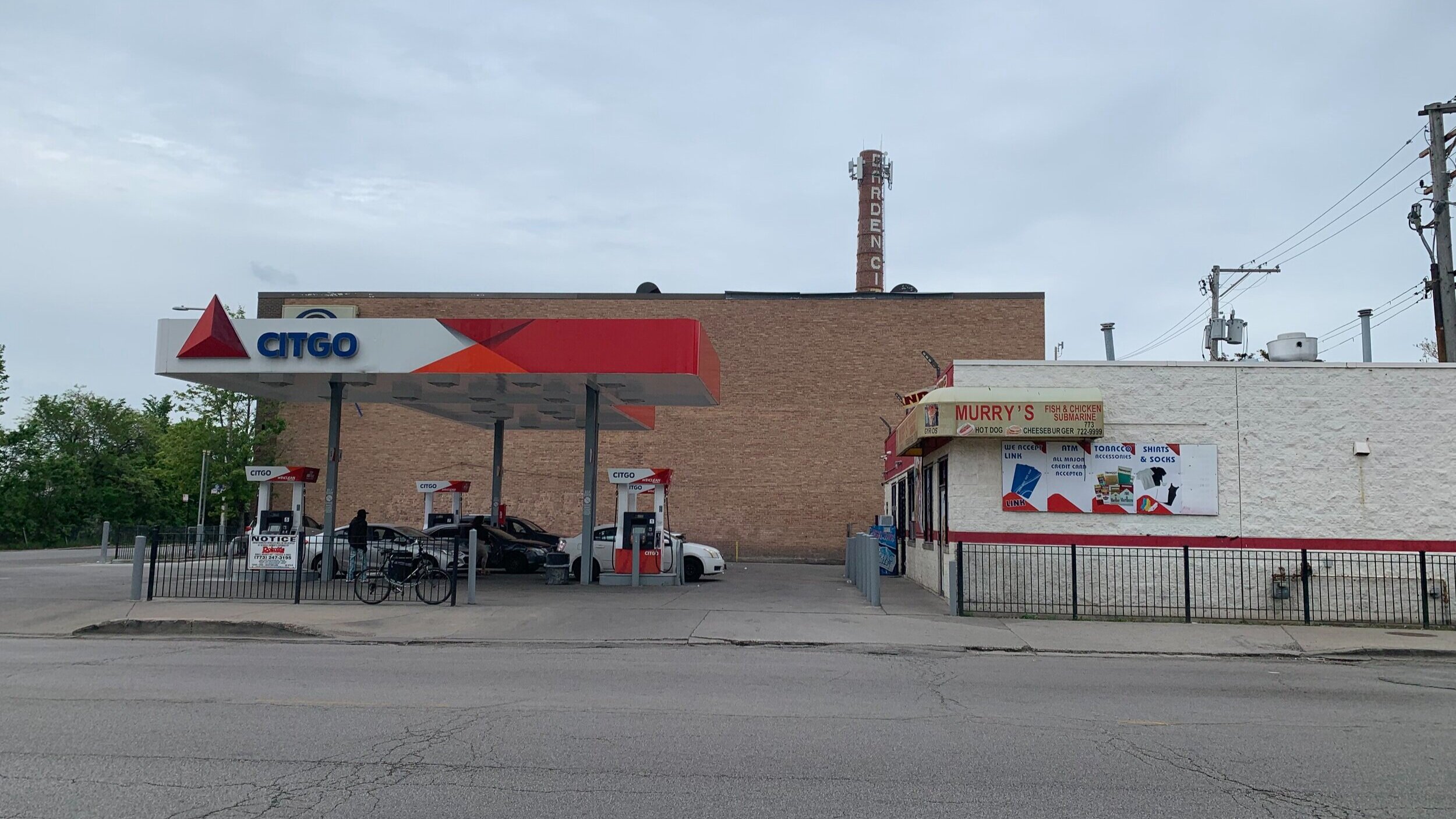The project that will increase walkability in North Lawndale
The CITGO gas station located in-between the intersection of Harrison St. and Homan Ave. The photo was taken by Sabrina Hart on May 18, 2021, near the blue line station in North Lawndale.
Carrie Wright not only considers herself a designer but also an educator after teaching a class of college and high school students civic design to inspire walkability in the North Lawndale community through creativity.
“I was excited to teach the class and make it a reality,” Wright said. “I wanted there to be a structure for the youth to organize as partners on the project and build their contributions to the overall project.”
Wright was brought in for the first phase of Walkability Assessment Initiative Kedzie-Homan (WA|K-H) as a designer to help identify the barriers pedestrians may face when walking in the area. The project began in July 2019 to improve walkability in the half mile radius of the Kedzie-Homan Blue Line station. Wright’s role in the walkability project elevated from a team member to an instructor after the first phase of WA|K-H.
The Lawndale Civic Design course was held on Zoom every Monday beginning with the first semester of the class on Sept. 14, 2020 that finished on Nov. 23, 2020. The second semester began on Feb 22, 202 and it ended on May 3, 2021.
A close-up of the CITGO gas station wall where the proposed mural would be installed. The photo was taken by Sabrina Hart on May 18, 2021, near the Blue Line station in North Lawndale.
The approach to improving walkability narrowed down to creating an art installation. The objective for this most recent semester was for the students to propose the mural design and lighting that would be installed on the gas station wall at W. Harrison St. and S. Homan Ave, facing Homan Avenue.
North Lawndale is one of many sites where Consortium to Lower Obesity in Chicago Children (CLOCC) collaborates with community-based organizations to invest in public health and transportation.
CLOCC partnered with North Lawndale Community Coordinating Council (NLCCC), the School of the Art Institute of Chicago (SAIC) at Homan Square and city agencies to support and devise programs and initiatives that would advocate for the public's safety and encourage physical activity throughout Chicago.
The first phase consisted of conducting a walkability assessment to collect qualitative data, as well as a perceptual survey, to pinpoint the barriers walkers faced as they walked throughout the neighborhood.
“The initial idea was about lowering obesity in children, and what is the most accessible form of exercise? Just getting out and walking,” Wright said. “So then why are there some neighborhoods where people are not as inclined to go walking? And what are the barriers to walking in those areas?”
Wright was hired on the team due to her previous design work with North Lawndale and her familiarity with the community.
“When I was a grad student, I worked with CCA Academy with the students on their PermaPark,” Wright said. “They're working on projects to build their community food forest, and most recently I led the students through designing the signage that you see up in the park right now.”
During this past session, Wright taught her students about the correlation between aesthetics and design. Her students created mood boards of North Lawndale that showcase the nature and beauty they associate with the community.
The students also researched the barriers to walkability at the W. Harrison St. and S. Homan Ave. intersection by conducting interviews and collecting oral histories to put together visuals that represented the data.
"Having the class gave the youth their own formal structure in which to have set expectations and define what we were going to be contributing…," Wright said. "It really changed the structure of the program and gave the youth a bigger footprint."
The students collaborated with SAIC students in the Design @ Homan Square class, taught by Eric Hotchkiss. The students discussed the impact of the neighborhood gas stations on walkability to better understand how North Lawndale can visually represent itself.
Wright introduced the safety beautification engagement mural proposal to her students that Hotchkiss's class put together based on the mood boards and conversations with North Lawndale community members from the previous sessions.
Through the collaboration between Wright and Hotchkiss’s classes, a mural design has been finalized. Charrettes were held over Zoom in order to receive input from North Lawndale residents. The votes and feedback collected from the online survey were also used by WA|K-H community networks.
“I hope that students do learn something about the process of actually getting something made in the real world, and the collaboration that's required, and how plans can change and how to roll with that and think on your feet,” Wright said.
After tallying up the residents' votes, it was decided that the mural's image will be a Black power fist surrounded by neon lights. The team will continue on the mural installment this summer. It is set to go up by the end of June 2021.



